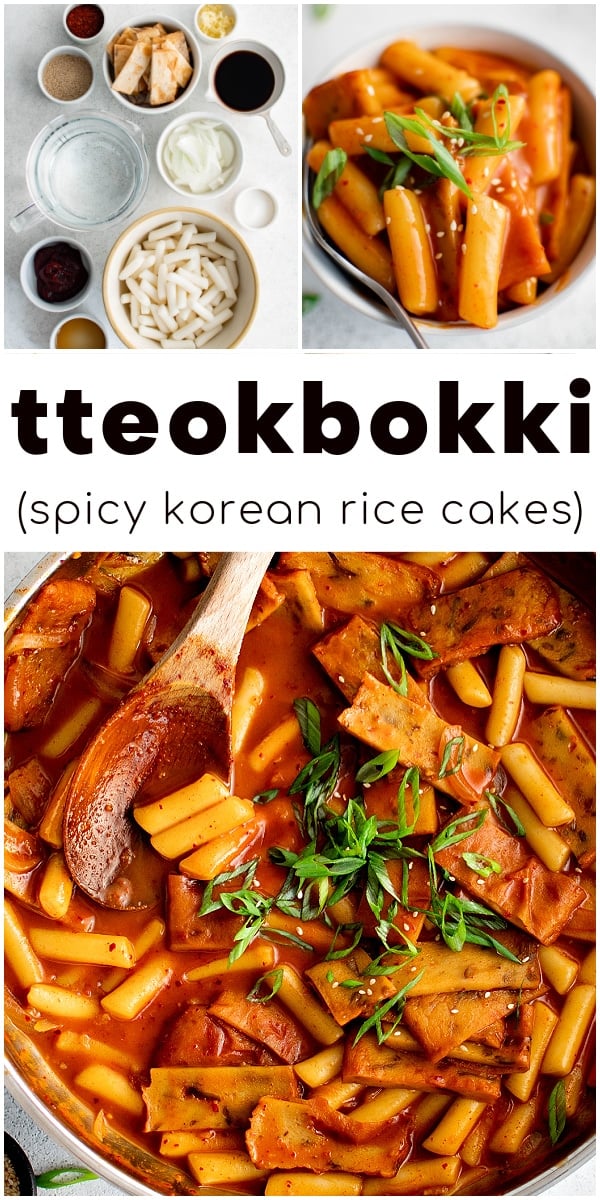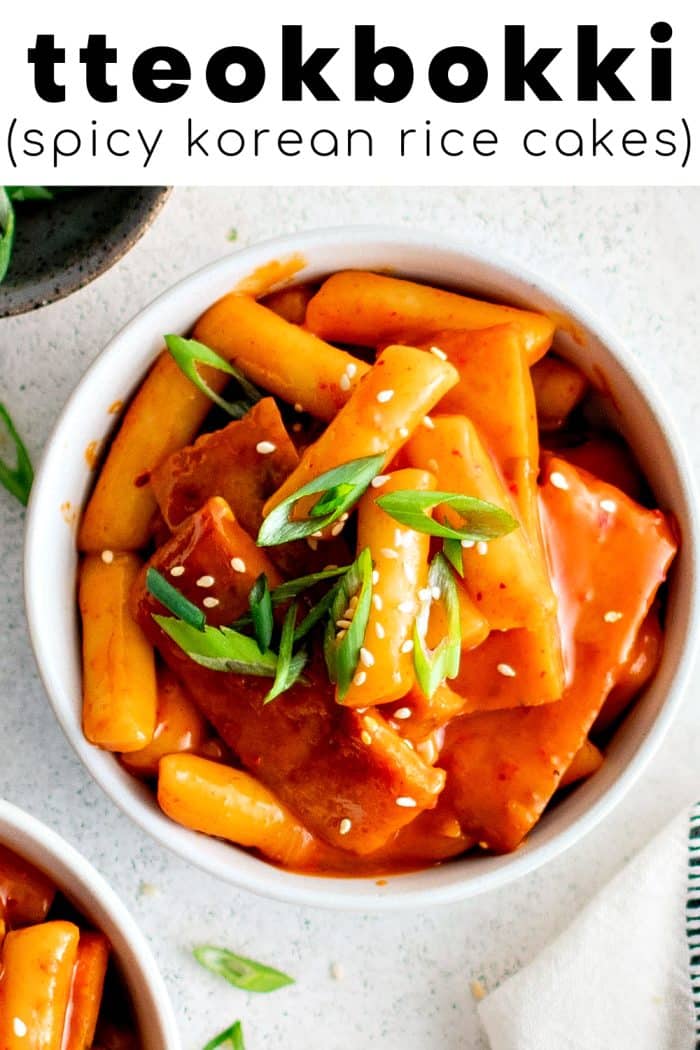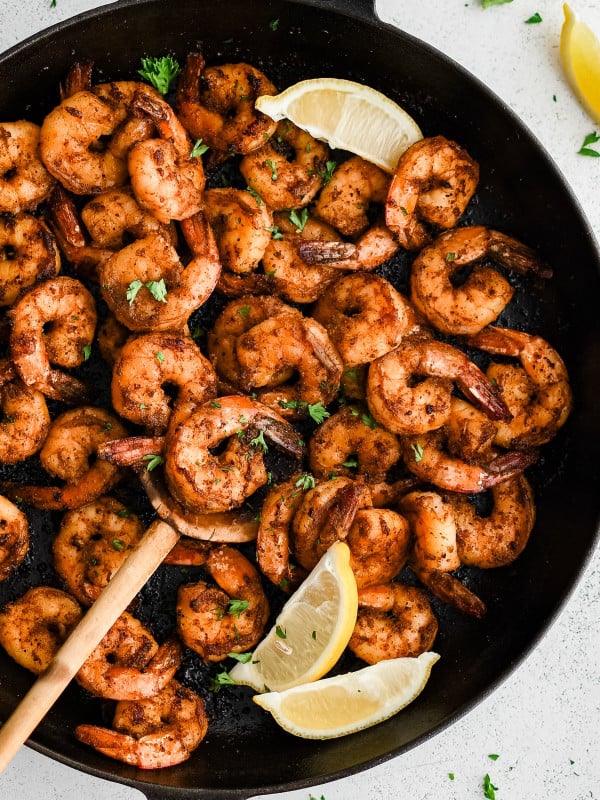This post may contain affiliate links. Please read our disclosure policy.
Tteokbokki is a popular Korean street food made with chewy cylinder-shaped rice cakes simmered in an addictively sweet, spicy, or savory sauce. Super easy to make at home, this tteokbokki recipe is absolutely delicious!
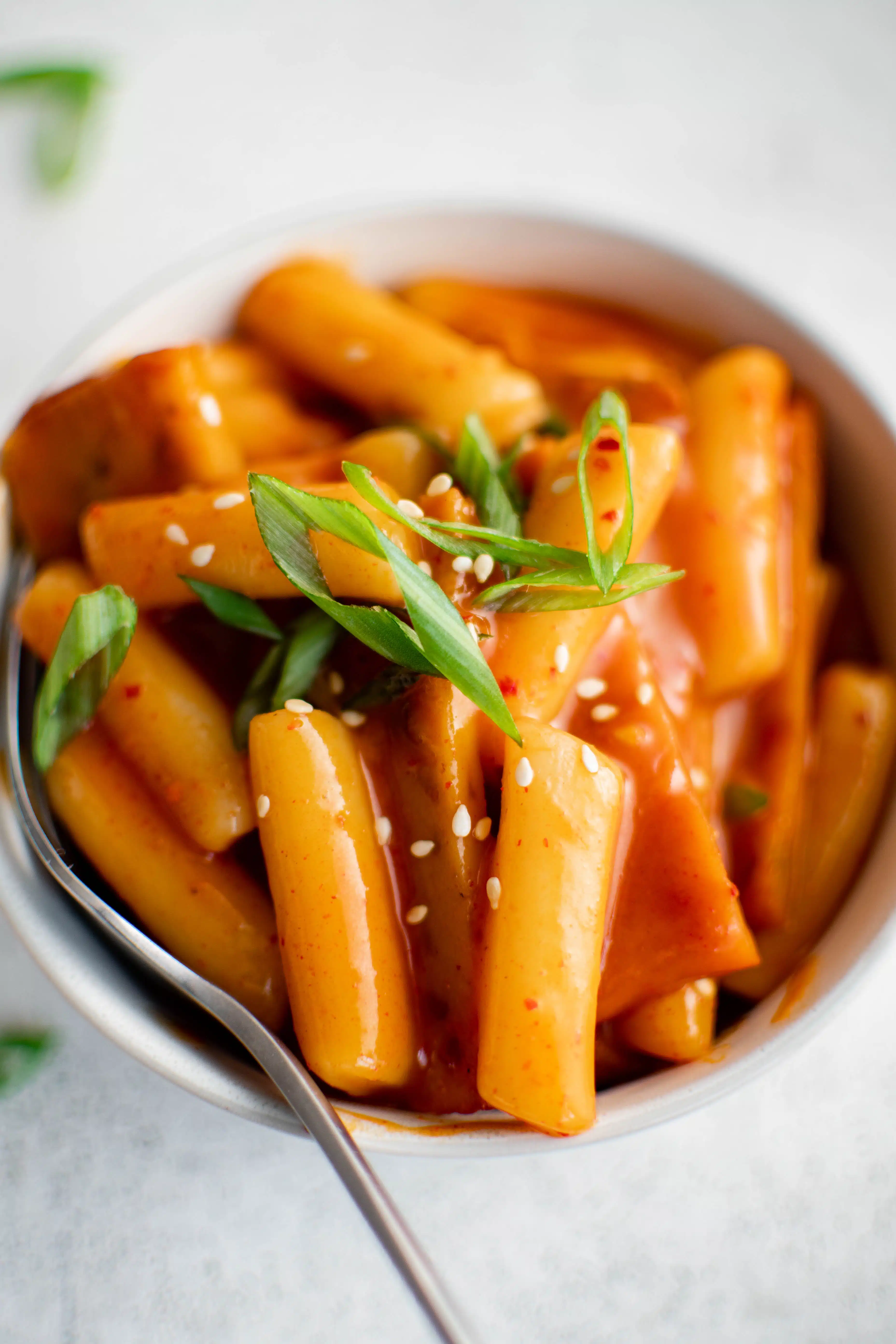
Today I’m sharing another Korean favorite – tteokbokki! Made with Korean-style, tube-shaped rice cakes simmered in a spicy tteokbokki sauce, the name may be somewhat hard to pronounce (for us Westerners), but it’s super easy to make. Serve as a stand-alone meal or with Korean fried chicken, kalbi (Korean BBQ beef short ribs), or kimchi.
What is Tteokbokki?
Tteokbokki (떡볶이), also spelled Dukbokki, is a popular Korean dish made from garae-tteok (long, white, cylinder-shaped chewy rice cakes about the size of penne pasta), called tteokmyeon (떡면; “rice cake noodles”). There are many variations of tteokbokki.
The most common is made with gochujang (spicy Korean red chili paste), fish cakes, boiled eggs, and scallions. The sauce is often sweetened with sugar. This type of tteokbokki sauce has a spicy, slightly sweet, and savory taste and is usually served as a main dish or a snack.
A less spicy version, gungjung-tteokbokki, is a variety that uses soy sauce instead of gochujang, creating a savory, non-spicy dish. Another variety is cheese tteokbokki, which includes cheese as a topping, giving the dish a creamy texture.
Tteokbokki is a common street food in South Korea and can be found at many food stalls, known as pojangmacha. It’s also served in restaurants and can be made at home.
What is Garaetteok (가래떡) Made Of?
Garae-tteok is a type of Korean rice cake made from non-glutinous rice flour. This rice is soaked, ground, and then steamed to create a chewy, cylindrical rice cake to be used in dishes like tteokbokki and tteokguk (rice cake soup). It has a soft, chewy texture and a mild, neutral taste that makes it versatile for use in both sweet and savory dishes. They are gluten-free.
Where to Buy Tteokbokki Rice Cakes?
You’ll have the best luck finding tteokbokki rice cakes at Korean or Asian grocery stores. They may be sold freshly made or commercially made and packaged either fresh or frozen. Fresh will taste best, but frozen rice cakes are convenient for those last-minute cravings.
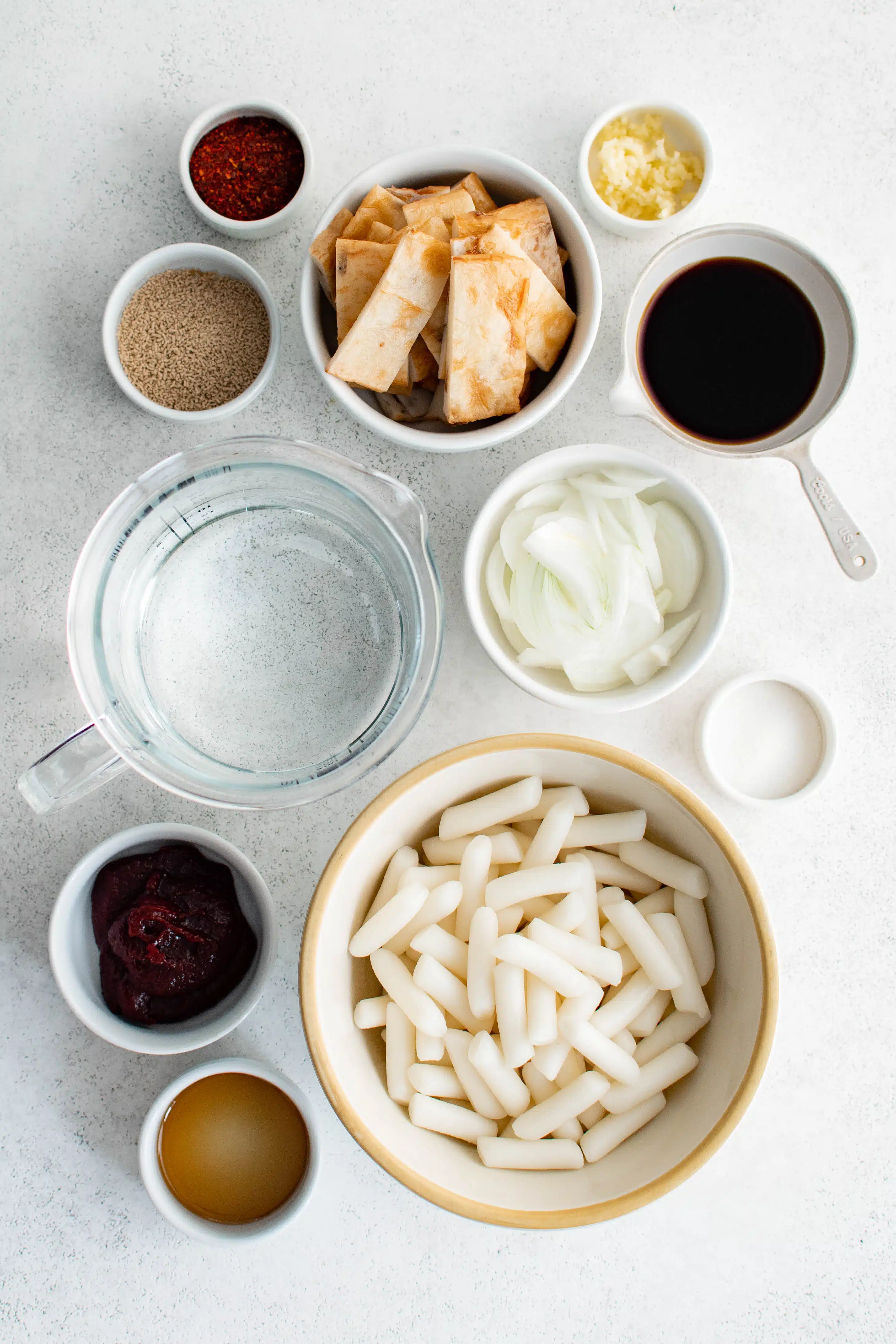
Ingredients in Spicy Tteokbokki
Tteokbokki is a versatile dish with many possible variations, but here are the basic ingredients for traditional tteokbokki with spicy sauce:
- Rice Cakes (Tteok): Described above, these are cylindrical rice cakes called “Garae-tteok.” They are the most important ingredient in tteokbokki.
- Fish Cakes (Eomuk): These thin slices of processed seafood add flavor and texture to the dish.
- Gochujang (Korean red chili paste): This gives tteokbokki its characteristic spicy flavor. Gochujang is a staple in Korean cuisine, known for its spicy and slightly sweet taste.
- Gochugaru (Korean chili powder): This may also be used to add extra heat to the dish.
- Sugar: A little sugar is used to balance the spiciness of the gochujang sauce.
- Soy Sauce: A small amount is used for added depth of flavor.
- Garlic: Minced or crushed, this also adds depth of flavor.
- Scallions (Green Onions): These are sliced and added to the dish just before serving for a bit of crunch and freshness.
- Water or Anchovy Stock: This forms the base in which the rice cakes are cooked (see notes below).
Optional Additions and Substitutions
Optional Additions:
- Hard Boiled eggs
- Sesame seeds
- Cheese
- Cabbage or bok choy
Optional Substitutions:
- Water or Anchovy Broth: Traditional Tteokbokki is made with water or anchovy broth. A great alternative (that we’re using in this recipe) is to dissolve dashi powder in water to create an umami-rich soup broth. Of course, chicken or vegetable broth will also work.
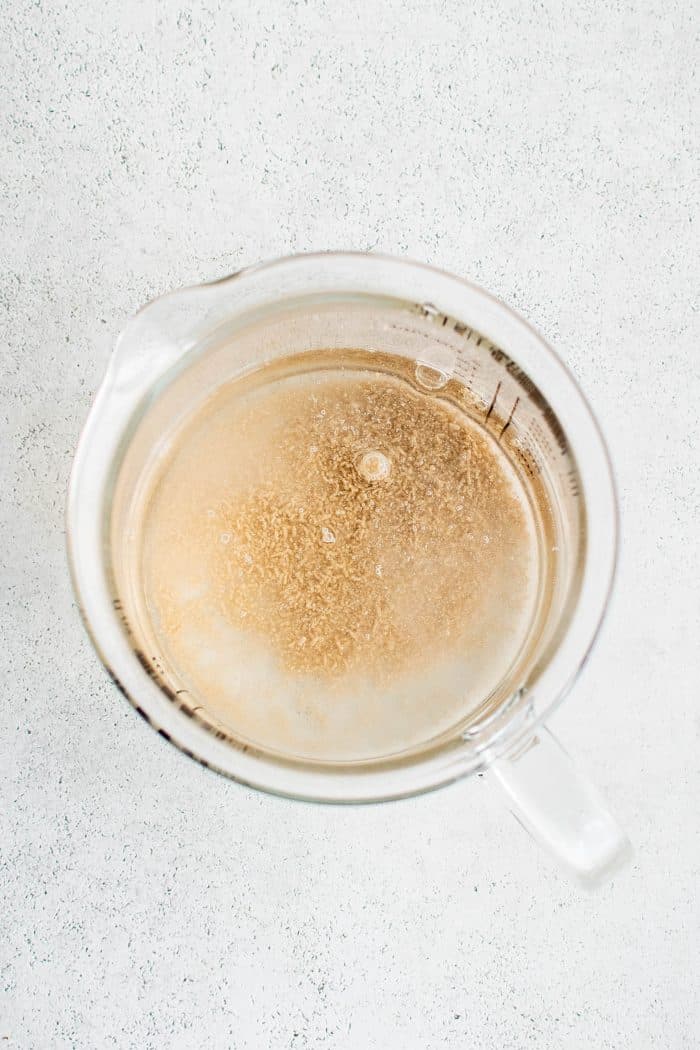
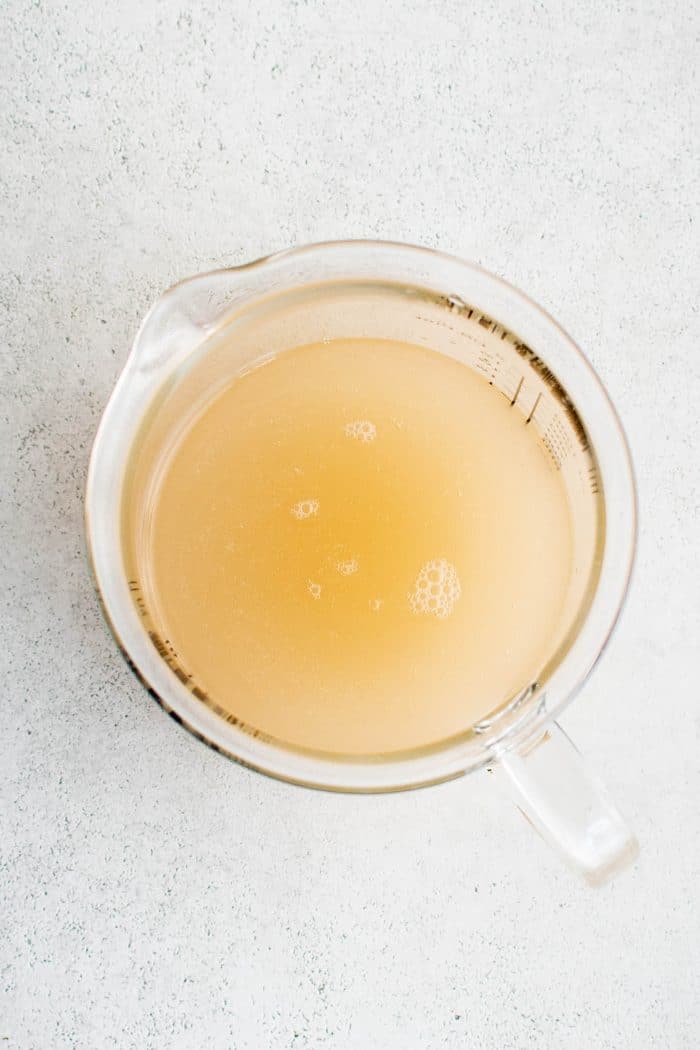
How to Make Tteokbokki
1. Prepare the broth: Dissolve the dashi powder in two cups of warm water. Set aside.
2. Sauté the aromatics and chili paste: Sauté the onions in a little sesame oil in a large pan set over medium heat. After a couple of minutes, add the minced garlic and sauté until fragrant then immediately add the gochujang paste, granulated sugar, and Gochugaru powder. Mix well to combine with the onions. Cook for 3 minutes.
3. Stir in the broth: And bring the broth to a simmer over medium-high heat.
4. Add the rice cakes and fish cakes: Reduce heat to medium then add the rice cakes and fish cakes. Cook until the sauce thickens and the cakes are cooked through and chewy.
5. Garnish: With freshly chopped green onions, sesame seeds, and gochugaru (Korean chili flakes).
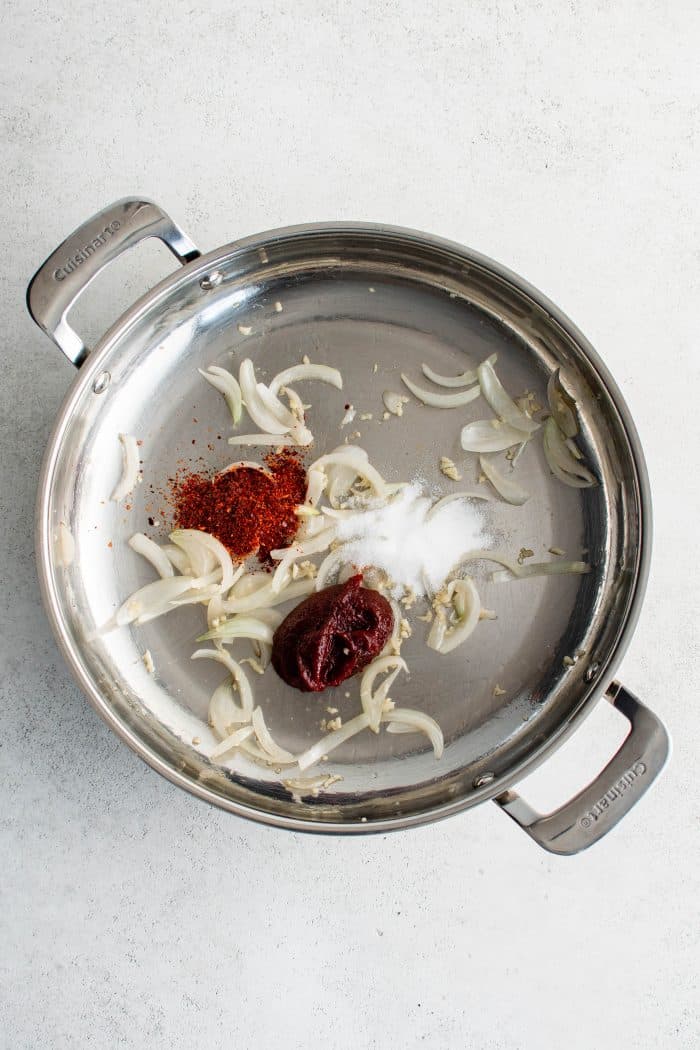
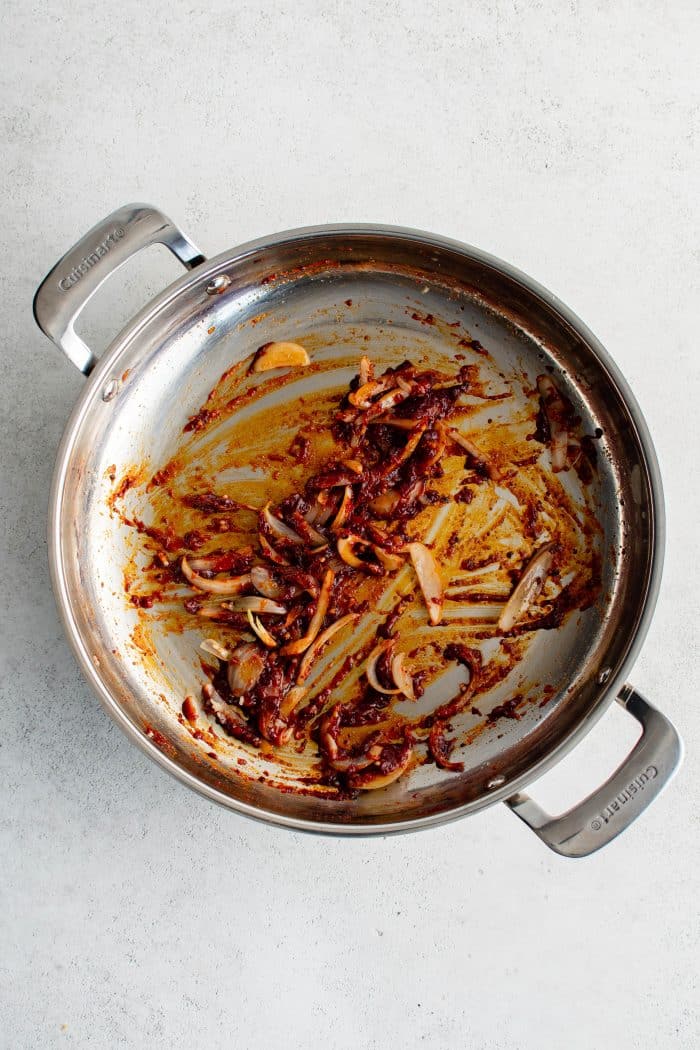
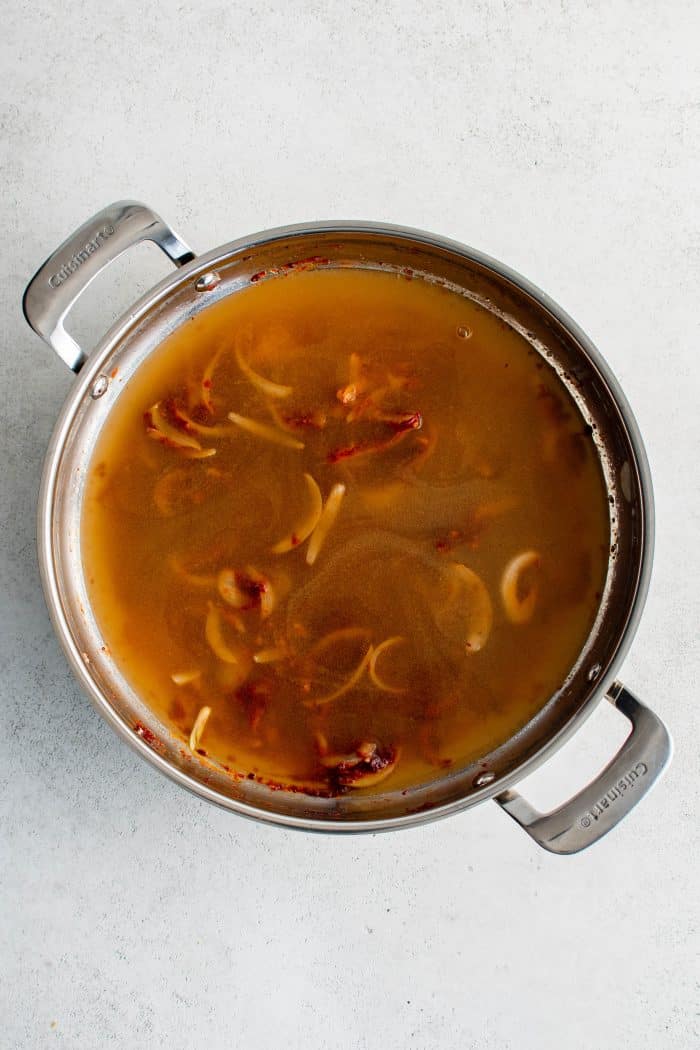

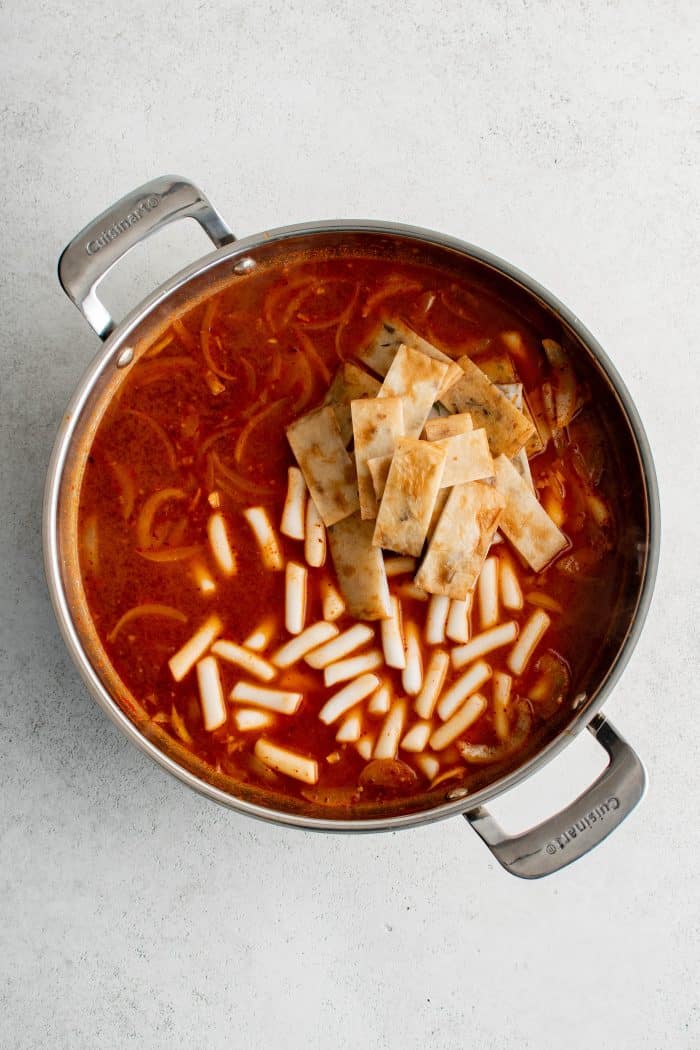
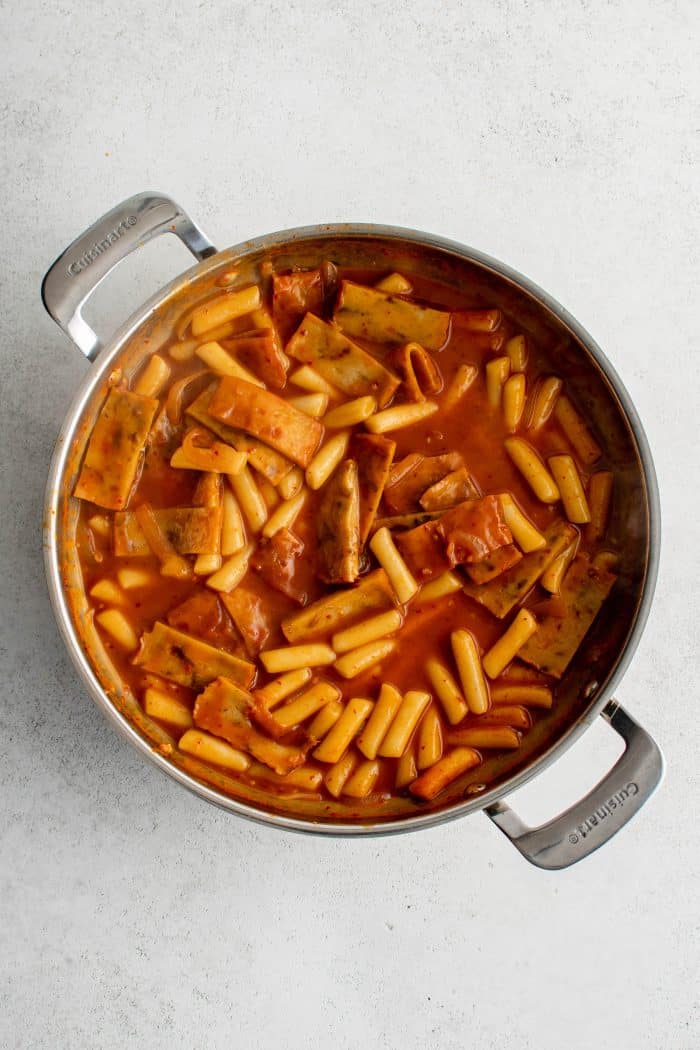
Storage, Freezing, Reheating
Storage: Cool the tteokbokki to room temperature and transfer to an airtight container. Keep stored in the refrigerator for up to 2-3 days.
Freezer: Allow the tteokbokki to cool down to room temperature before transferring to a freezer-safe container. Remove as much air as possible. Keep stored in the freezer for up to one month. Note: The texture of the rice cakes may change slightly after freezing and thawing; they might become a bit chewy or rubbery.
Reheating: To reheat leftovers, heat them in a pan over medium heat with a little water to help them rehydrate and prevent them from sticking. Stir until heated through. From frozen, allow to thaw in the refrigerator overnight before reheating in the same way as above.
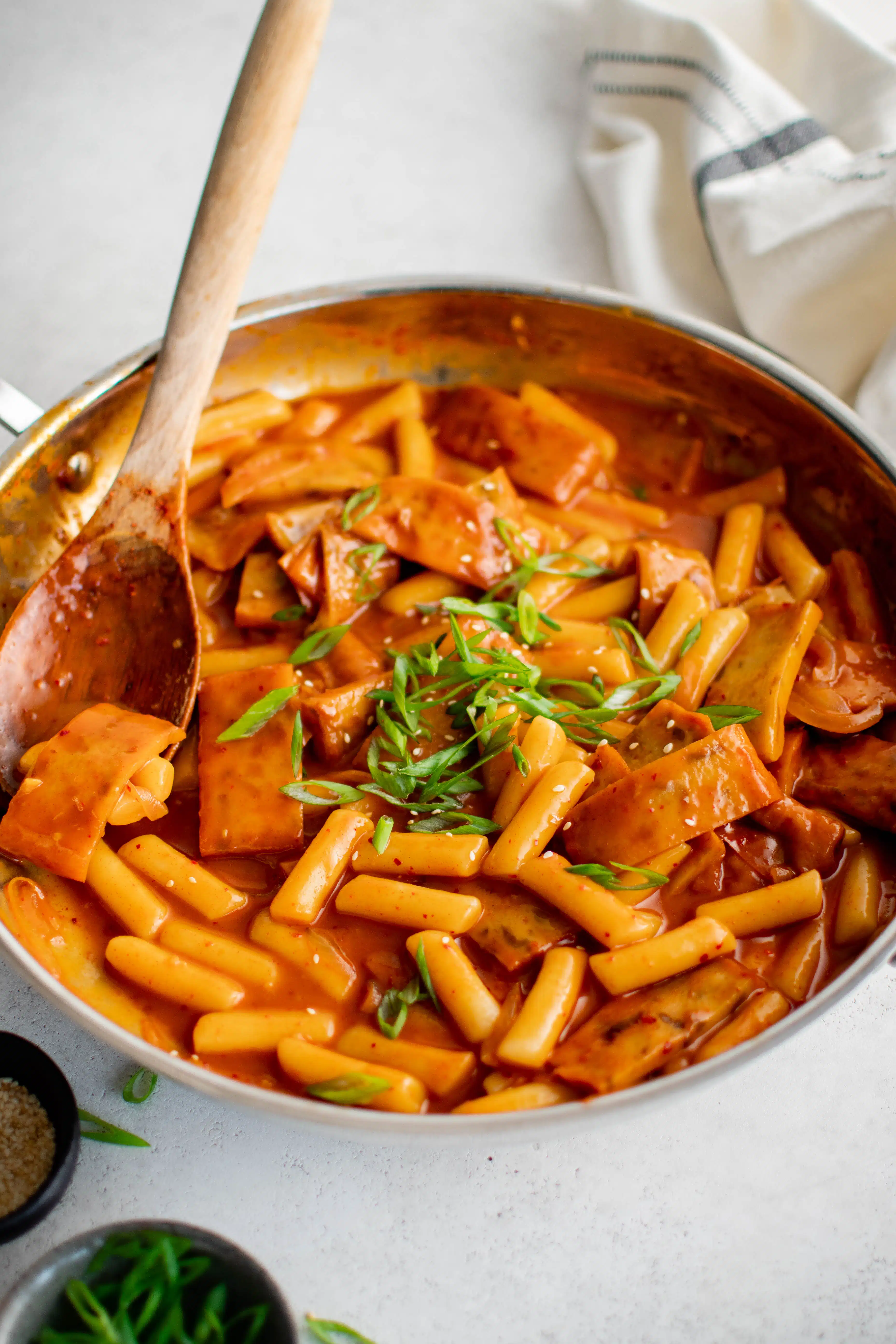
More Amazing Asian Recipes,
- Gyoza (Japanese Potstickers)
- Gyoza Dipping Sauce
- Yakisoba Noodles Recipe
- Miso Ramen
- Chashu Pork
- Chicken Yakitori Recipe
- Easy Edamame Recipe
If you try making this Tteokbokki Recipe, please leave me a comment and let me know! I always love to hear your thoughts.
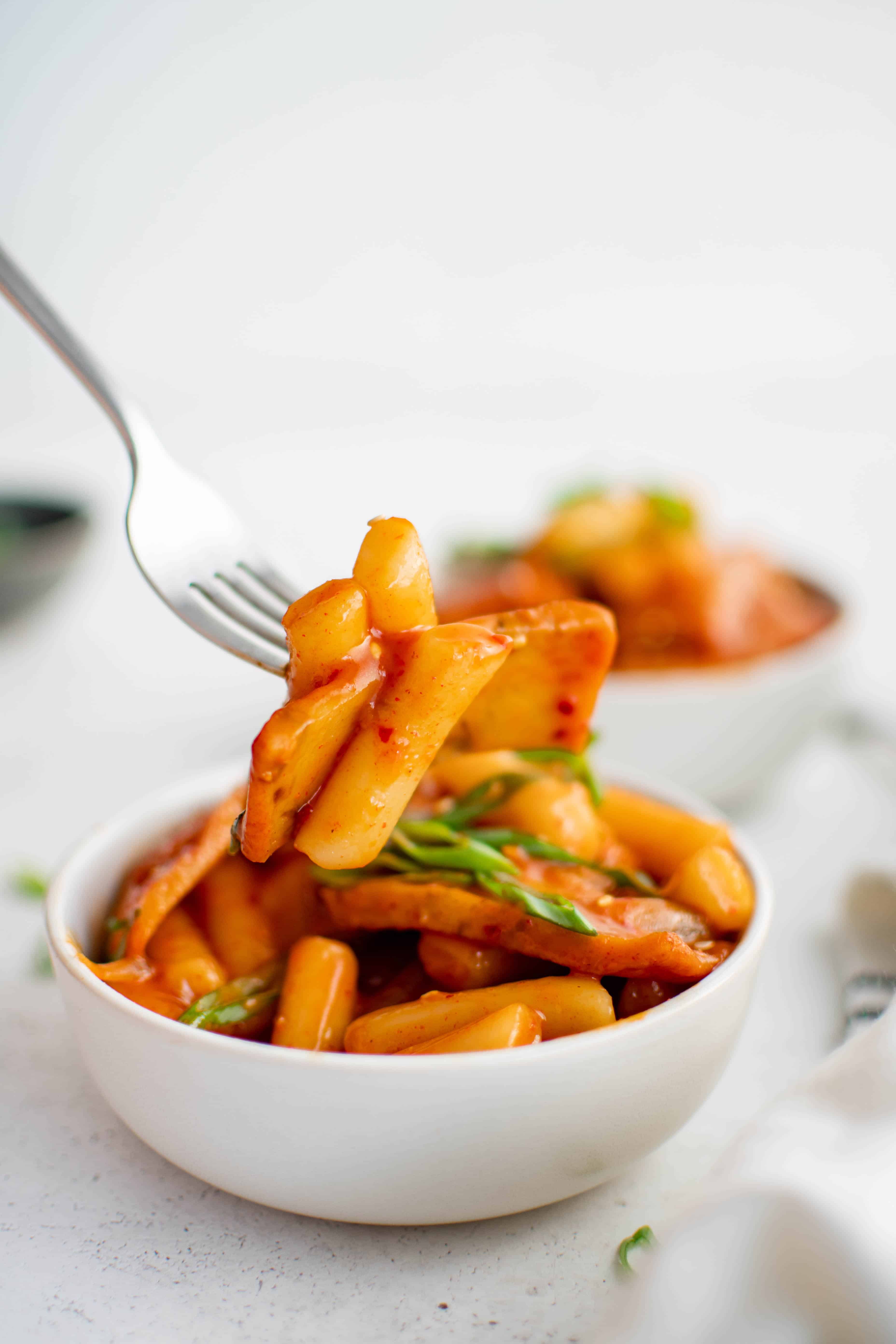

Tteokbokki Recipe (Spicy Korean Rice Cakes)
Ingredients
- 2 cups warm water
- 1 tablespoon dashi powder
- 1 teaspoon sesame oil
- ½ yellow onion, sliced thin
- 3 cloves garlic, minced
- 3 tablespoon Gochujang paste
- 2 teaspoon granulated sugar
- 1½ teaspoon Gochugaru powder, plus more to taste
- ¼ cup soy sauce
- 2 (200 gram) packs Korean rice cakes
- 1 (6-ounce) package sliced fish cakes, see notes
- sliced green onion and sesame seeds, to garnish
Instructions
- In a large measuring cup, combine the water and dashi powder until dissolved, then set aside.
- Heat the sesame oil in a large pan or wok set over medium heat. Sauté the onions for 2 minutes, until slightly translucent, then add in the garlic and sauté for 30 seconds until fragrant.
- Mix in the gochujang paste, granulated sugar, and Gochugaru powder. Cook for 3 minutes, stirring occasionally.
- Add the dashi water mixture and soy sauce to the chili garlic onions. Increase heat to medium-high heat and bring to a gentle simmer.
- Reduce the heat to medium, add the rice cakes and fish cakes, and cook for 6-8 minutes or until the sauce thickens and the cakes are cooked through and chewy.
- Garnish with freshly chopped green onions and sesame seeds if desired.
Notes
- Fish cakes can be found at many Asian supermarkets. If you can’t find any, just leave it out, the overall taste of the dish will be the same.
Nutrition
Nutrition information is automatically calculated, so should only be used as an approximation.
